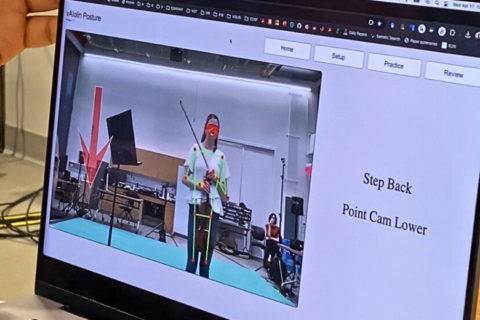POTOMAC, Md. — In response to community outcry over eight trees chopped down along the C&O Canal towpath near Swain’s Lock, the National Park Service is admitting it did not communicate well with park lovers its plan to reforest the area.
Away from the roar of water rushing through Swain’s Lock, over the towpath and down into the campground site along the Potomac River, a group of concerned citizens gathers to hear an explanation from National Park Service arborists and the park superintendent.
“We didn’t meet the standard of communication. What we’re really trying to do here is communicate visitor safety is truly important to the Park Service,” says Kevin Brandt.
He acknowledged the park service’s decision to remove eight trees near the campground without any notice to those who use the park.
“We didn’t communicate our intent to come in and re-vegetate; to create a forest succession of the campground to sustain it over the long haul,” he says.
After a park visitor was killed by a falling tree earlier this year and others have been hurt by falling branches, the park service is assessing the health of its trees and marking hazardous trees for removal or pruning, Brandt says.
Of the park’s 278 trees, the Park Service has identified 28 to be removed. Eight of those have already been chopped. Another 32 will be pruned.
“Very often we don’t know anything until trucks appear, the chain saws come out and ooh, yes,” Kay Fulcomer says, expressing her frustration at the loss of trees.
Fulcomer is a volunteer at the park and does six to seven cleanings of this campground and the nearby waterway a year. She was one of about 40 citizens who stood in the rain to suggest alternatives to chopping down the trees, especially those along the river.
“They look like they’re gonna fall and they will! But they’re holding the soil in place and that’s what protects this land,” Fulcomer says.
Including bringing in a hydrologist to assess the soil and preventing future erosion, the group also suggested moving the campground itself so there would be less danger to visitors and planting new trees before removing existing ones.
Montgomery County council member Roger Berliner says he understands Brandt’ charge to protect visitors.
“His fundamental obligation is to make sure that a tree that has been identified as a hazard doesn’t fall on someone because then the federal government, like anyone, has seriously liability,” Berliner says.
He was pleased with the turnout of those who love the park sharing their informed ideas as to the next steps. The Park Service will take the comments under advisement and decide how to move forward.








